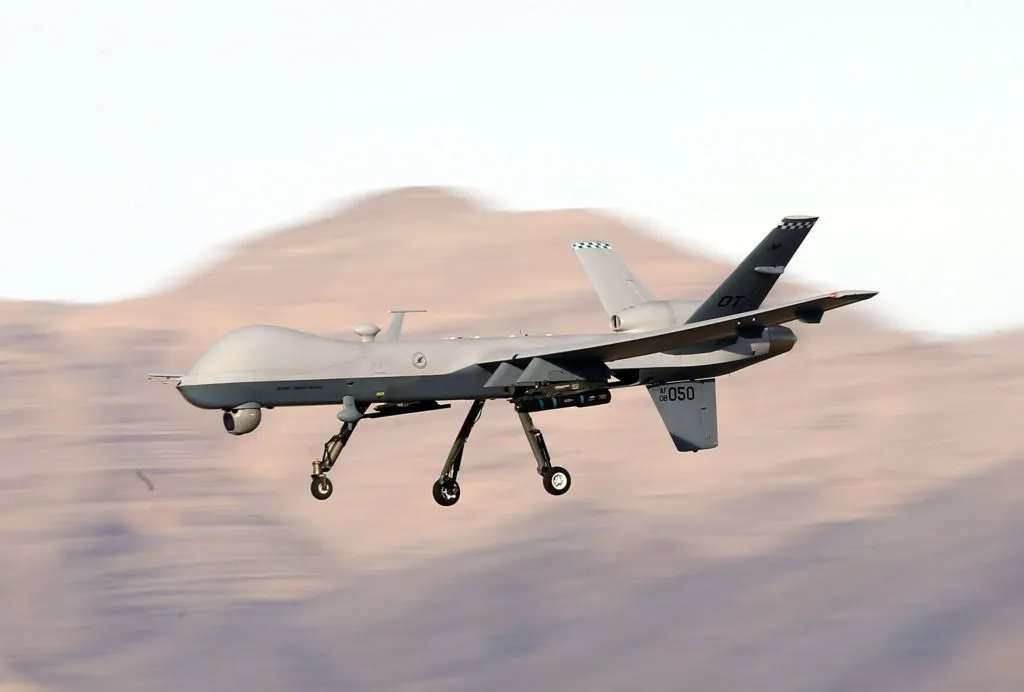
Lockheed Martin’s Sikorsky division has introduced the Nomad™ family of long-endurance, runway-independent drones, marking a major leap forward in autonomous vertical take-off and landing (VTOL) aircraft design. Less than a year after demonstrating the efficiency and reliability of its rotor blown wing VTOL Uncrewed Aerial System (UAS), Sikorsky is now presenting the Nomad as a scalable, multi-mission family of drones capable of transforming aerial operations across defense, security, and civilian applications.
The Nomad’s twin proprotor configuration seamlessly blends the attributes of both helicopters and fixed-wing aircraft. This hybrid design allows each Nomad drone to take off, hover, and land vertically like a helicopter, while also achieving long-range, fuel-efficient forward flight similar to an airplane. The aircraft leverages Sikorsky’s MATRIX™ autonomy technology and predominantly operates with hybrid-electric propulsion, ensuring high endurance and low emissions. Larger variants within the family will feature conventional drivetrains to handle greater payloads and mission requirements.
Scalable Design and Versatility
According to Rich Benton, Sikorsky’s vice president and general manager, scalability is central to the Nomad concept. “We use the term ‘family’ to point to a key attribute of the design—its ability to be scaled in size from a small Group 3 UAS to the footprint equivalent of a Black Hawk helicopter,” Benton explained. This scalability allows the Nomad series to be tailored to different mission sizes and requirements, offering a modular approach to modern unmanned operations.
Benton emphasized that the Nomad family is designed for adaptability and independence from traditional runways, enabling it to operate in austere environments on both land and sea. “The resulting Nomad family of drones will be adaptable, go-anywhere, runway-independent aircraft capable of land and sea-based missions across defense, national security, forestry, and civilian organizations,” he said. He added that these drones will act as “force multipliers,” supporting and complementing manned aircraft such as the UH-60 Black Hawk, particularly in regions where flexible and extended aerial coverage is crucial, including the Indo-Pacific theater and other strategic zones.
From Prototype to Production
Sikorsky’s rapid progress in developing the Nomad family demonstrates the company’s focus on fast iteration and real-world testing. In March 2025, Sikorsky successfully completed an extended flight test of its Nomad 50 prototype, a compact model with a 10.3-foot wingspan. The aircraft proved the viability of its rotor blown wing concept and MATRIX autonomy during a series of complex flight maneuvers.
Building on this success, Sikorsky has begun work on the Nomad 100, an 18-foot wingspan Group 3 variant, expected to achieve its first flight within the coming months. The Group 3 classification, which includes aircraft weighing between 56 and 1,320 pounds, positions the Nomad 100 for medium-endurance reconnaissance, logistics, and surveillance roles. Larger models in the Nomad lineup will enter Group 4 and Group 5 categories, encompassing heavier aircraft capable of carrying advanced sensors, weapons, and supplies for more demanding missions.
Mission Flexibility and Applications
The Nomad VTOL UAS family is purpose-built to perform a wide range of tasks, from reconnaissance and light attack missions to contested logistics operations in denied environments. Its hybrid-electric powertrain delivers excellent fuel efficiency and long endurance, while the twin-proprotor configuration ensures stability and control in both hover and forward flight. This versatility enables Nomad aircraft to conduct operations that would be challenging or impossible for conventional fixed-wing drones or helicopters.
Each Nomad system integrates Sikorsky’s MATRIX™ autonomy suite, an open-architecture platform that allows seamless coordination across both rotary and fixed-wing aircraft. MATRIX technology, developed by Sikorsky Innovations in collaboration with the Defense Advanced Research Projects Agency (DARPA), has already been validated in diverse applications including autonomous aerial firefighting, cargo resupply, and advanced air mobility operations. Its adaptability and reliability make it a cornerstone of Sikorsky’s vision for next-generation autonomous flight.
MATRIX allows Nomad drones to navigate complex environments, avoid obstacles, and complete missions autonomously, reducing the need for constant human oversight. This autonomy not only increases operational safety but also enables simultaneous deployment of multiple drones, greatly expanding mission reach and efficiency.
A New Era for Autonomous Aviation
Sikorsky’s director of Advanced Programs, Dan Shidler, described Nomad as a major milestone in the evolution of autonomous flight systems. “Nomad represents new breakthroughs for Sikorsky and the next generation of autonomous, long-endurance drones,” he said. “We are acting on feedback from the Pentagon, adopting a rapid approach and creating a family of drones that can take off and land virtually anywhere and execute the mission—all autonomously and in the hands of Soldiers, Marines, Sailors, and Airmen.”
Shidler highlighted that the Nomad program is driven by direct input from U.S. defense users, reflecting the urgent need for autonomous systems capable of extended operations in remote or contested environments. The Nomad drones are engineered to deliver persistent surveillance, precision targeting, and resupply capabilities, even in areas where conventional aircraft would face logistical challenges or elevated risks.
Expanding Capabilities Across Sectors
Beyond military applications, the Nomad family also holds significant potential for civilian and commercial uses. Its ability to operate without runways or extensive infrastructure makes it ideal for tasks such as search and rescue, environmental monitoring, firefighting, and border patrol. For industrial or governmental organizations, the hybrid-electric system offers an environmentally conscious alternative that can operate efficiently for long durations with reduced operational costs.
By combining scalability, autonomy, and multi-mission versatility, Sikorsky’s Nomad line exemplifies the company’s commitment to next-generation aerial mobility. With continued development and the upcoming debut of the Nomad 100, the program signals a transformative step toward fully autonomous, runway-independent aircraft capable of shaping the future of both defense and civilian aviation.




